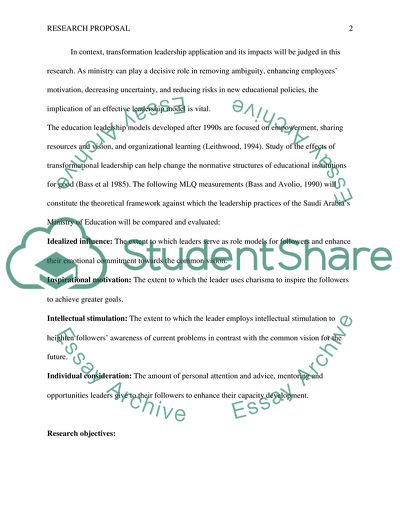Transformational Leadership on the Ministry of Education in Saudi Arabia Research Proposal Example | Topics and Well Written Essays - 1000 words. https://studentshare.org/education/1742220-pros-and-cons-of-the-application-of-transformational-leadership-style-in-education-ministry-in-saudi-arabia
Transformational Leadership on the Ministry of Education in Saudi Arabia Research Proposal Example | Topics and Well Written Essays - 1000 Words. https://studentshare.org/education/1742220-pros-and-cons-of-the-application-of-transformational-leadership-style-in-education-ministry-in-saudi-arabia.


